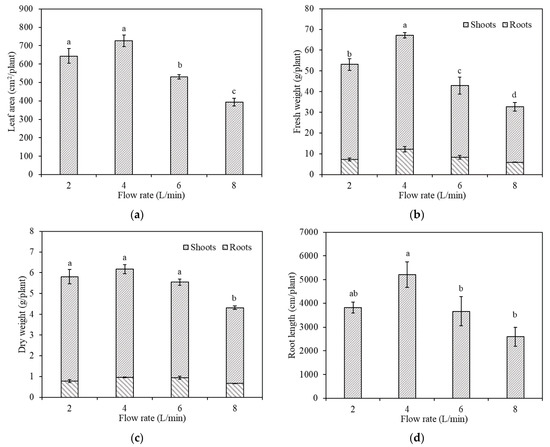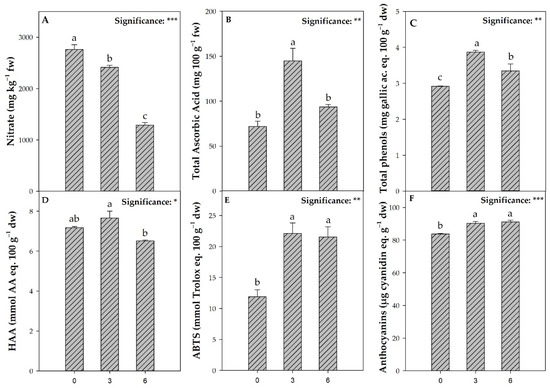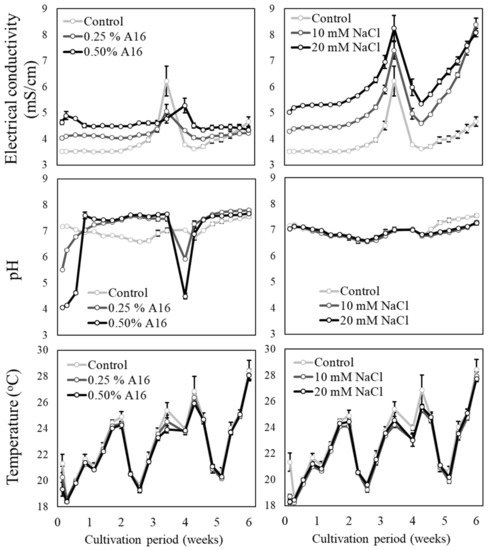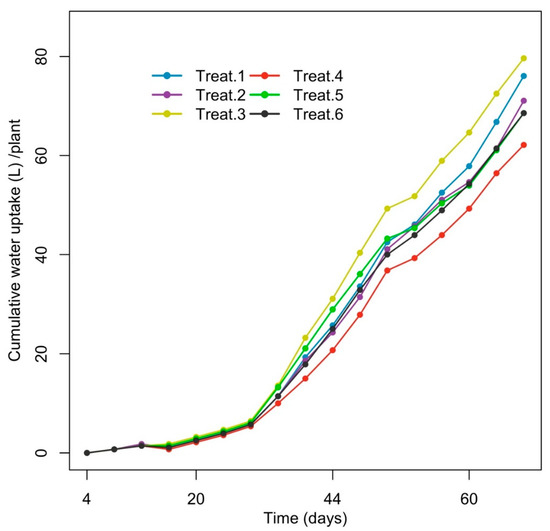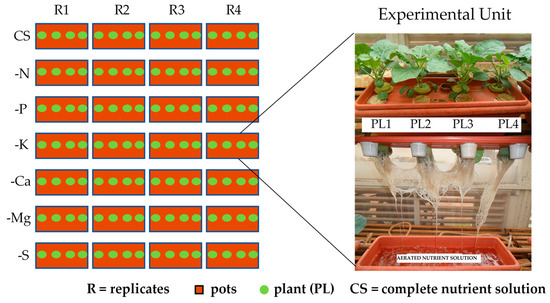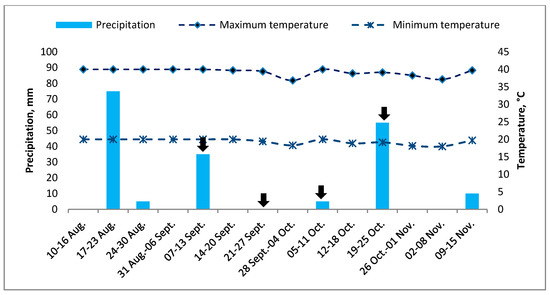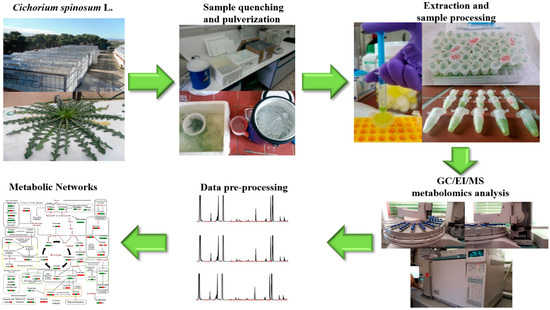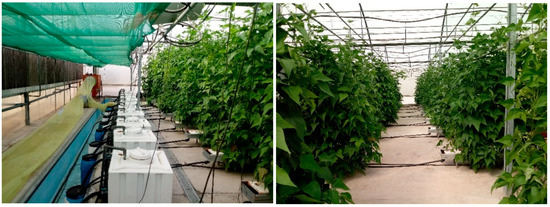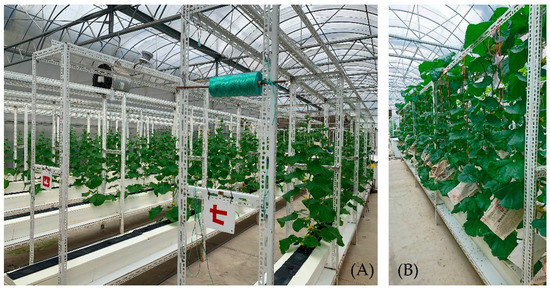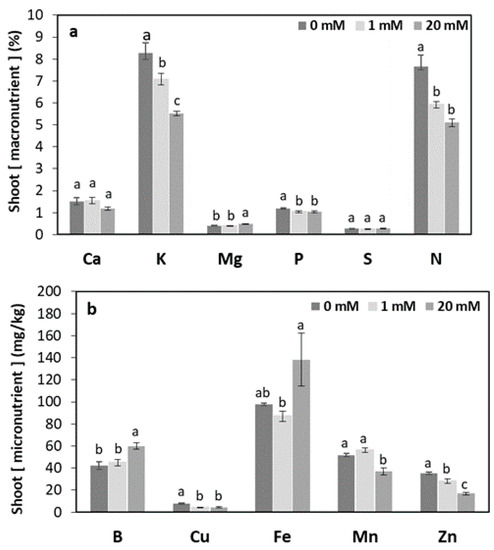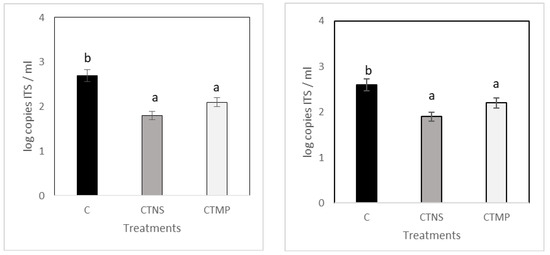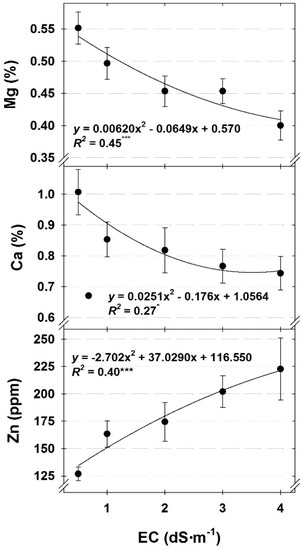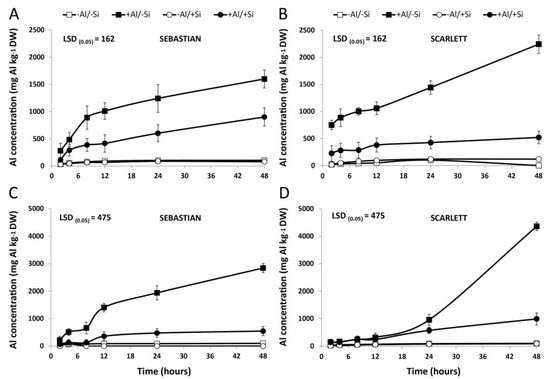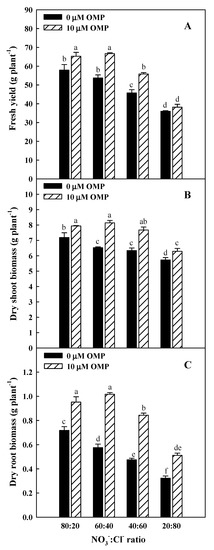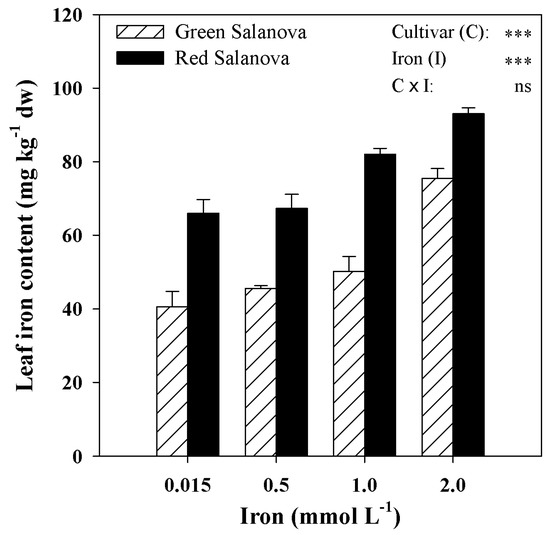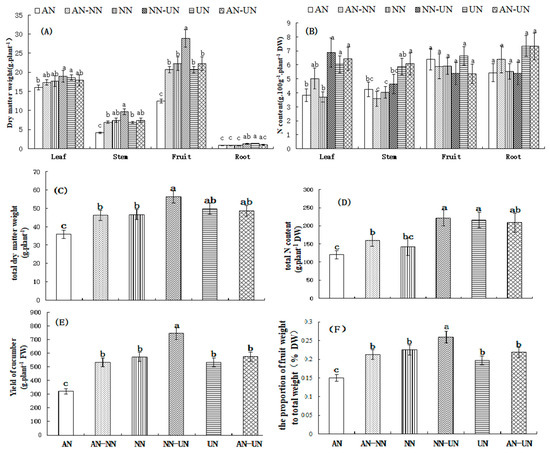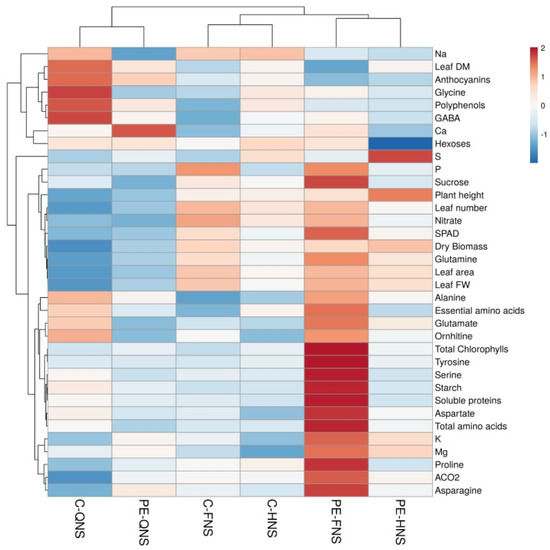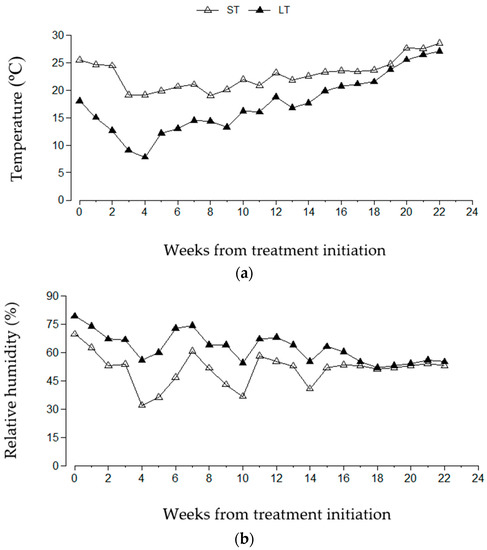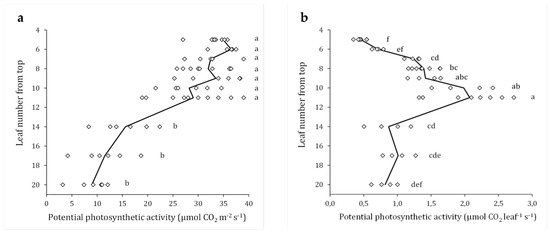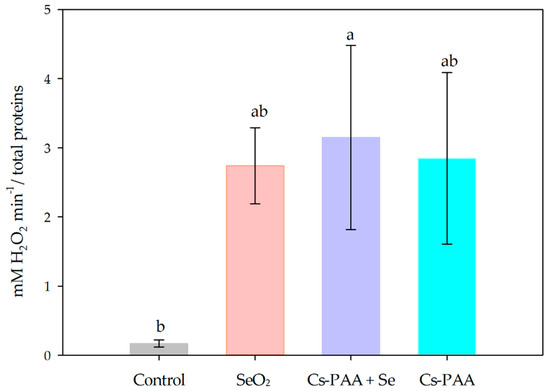Nutrition Management of Hydroponic Vegetable Crops
Share This Topical Collection
Editors
 Dr. Georgia Ntatsi
Dr. Georgia Ntatsi
 Dr. Georgia Ntatsi
Dr. Georgia Ntatsi
E-Mail
Website
Collection Editor
Laboratory of Vegetable Production, Department of Crop Science, Agricultural University of Athens, Iera Odos 75, 11855 Athens, Greece
Interests: vegetable production; hydroponics; plant nutrition; plant physiology; abiotic stress; fruit quality; biofortification; biostimulants; nitrogen fixation; phytohormones; plant metabolism; organic production; vertical farming
Special Issues, Collections and Topics in MDPI journals
 Dr. Damianos Neocleous
Dr. Damianos Neocleous
 Dr. Damianos Neocleous
Dr. Damianos Neocleous
E-Mail
Website
Collection Editor
Agricultural Research Institute, Natural Resources and Environment Section, P.O. Box 22016, Nicosia 1516, Cyprus
Interests: plant physiology; plant nutrition; hydroponics; sustainable intensive agriculture; precision irrigation and nutrient management; smart farming approaches
Special Issues, Collections and Topics in MDPI journals
Topical Collection Information
Dear Colleagues,
One way of meeting future food needs, with the world’s population nearing 7.5 billion with a productivity of agricultural production systems challenged by climate change and a shortage of the fundamental natural resources such as water and arable land, could be hydroponics—also known as “soilless cultivation”. Hydroponics include any system of growing plants without the use of soil as a rooting medium. In this system, all inorganic nutrients are supplied exclusively via irrigation water. One of the major advantages of hydroponics, besides being independent of the soil and hence of all problems related to it, is the complete control of nutrition via the nutrient solution.
The general idea of this Special Issue is to provide an international base for revealing the underlying physiological and molecular mechanisms of the nutritional management of hydroponically grown vegetables, with the aim of increasing their organoleptic, nutritional, and functional qualities. In particular, submissions of review papers and original research reporting novel scientific findings on (but not limited to) the following topics are welcome: (1) Macronutrient Management for Enhancing the Nutritional Quality of Hydroponically Grown Vegetables, (2) Biofortification of Vegetables with Essential and Beneficial Micronutrients, (3) Salinity Management in Closed Hydroponic Systems, (4) Decision Support Systems, (5) Optimization of Nutrient Solutions According to Crop Needs and Nutrient Uptake, (6) Recycling–Reusing–Saving Input Strategies, (7) Organic Hydroponics, (8) PGPRs and Biostimulants in Soilless Culture, and (9) (A)biotic Stresses Affecting Physiology and Product Quality of Hydroponically Grown Vegetables.
Dr. Georgia Ntatsi
Dr. Damianos Neocleous
Collection Editors
Manuscript Submission Information
Manuscripts should be submitted online at www.mdpi.com by registering and logging in to this website. Once you are registered, click here to go to the submission form. Manuscripts can be submitted until the deadline. All submissions that pass pre-check are peer-reviewed. Accepted papers will be published continuously in the journal (as soon as accepted) and will be listed together on the collection website. Research articles, review articles as well as short communications are invited. For planned papers, a title and short abstract (about 100 words) can be sent to the Editorial Office for announcement on this website.
Submitted manuscripts should not have been published previously, nor be under consideration for publication elsewhere (except conference proceedings papers). All manuscripts are thoroughly refereed through a single-blind peer-review process. A guide for authors and other relevant information for submission of manuscripts is available on the Instructions for Authors page. Agronomy is an international peer-reviewed open access monthly journal published by MDPI.
Please visit the Instructions for Authors page before submitting a manuscript.
The Article Processing Charge (APC) for publication in this open access journal is 2600 CHF (Swiss Francs).
Submitted papers should be well formatted and use good English. Authors may use MDPI's
English editing service prior to publication or during author revisions.
Keywords
- hydroponics
- vegetables
- nutrient uptake
- fruit quality
- (a)biotic stress
- nutrient solution
- crop physiology
- salinity
- macronutrients
- micronutrients
Published Papers (26 papers)
Open AccessArticle
Effect of Substrate Flow Rate on Nutrient Uptake and Use Efficiency in Hydroponically Grown Swiss Chard (Beta vulgaris L. ssp. cicla ‘Seiyou Shirokuki’)
by
Bateer Baiyin, Kotaro Tagawa, Mina Yamada, Xinyan Wang, Satoshi Yamada, Sadahiro Yamamoto and Yasuomi Ibaraki
Cited by 11 | Viewed by 3757
Abstract
Unlike in soil culture, a substrate (nutrient solution) in a hydroponics system can flow, and this can affect both nutrient uptake and plant growth. In this study, we hydroponically cultivated Swiss chard (
Beta vulgaris L. ssp.
cicla) under different flow rates
[...] Read more.
Unlike in soil culture, a substrate (nutrient solution) in a hydroponics system can flow, and this can affect both nutrient uptake and plant growth. In this study, we hydroponically cultivated Swiss chard (
Beta vulgaris L. ssp.
cicla) under different flow rates to analyze changes in the growth, nutrient uptake, and nutrient use efficiency. When the flow rate was intensified from 2 to 4 L/min, leaf area, the fresh weight, dry weight, and root length increased. However, when the flow rate was increased from 4 to 8 L/min, values of these growth parameters decreased. The nutrient uptake had a similar trend relative to the growth parameters and nutrient use efficiency of macronutrient elements, increased as the flow rate increased. This indicates that the flow rate affects plant growth by influencing the nutrient uptake, and an increase in the flow rate can aid in improving nutrient use efficiency. In hydroponics, regulating the flow rate at a reasonable volume is recommended to increase yield by enhancing nutrient use efficiency, but too intensive a flow rate may cause excessive physical stimulation to plants and inhibit their growth. Therefore, it is important to choose an appropriate substrate flow rate for optimal hydroponics production.
Full article
►▼
Show Figures
Open AccessEditor’s ChoiceArticle
Nutrient Solution Deprivation as a Tool to Improve Hydroponics Sustainability: Yield, Physiological, and Qualitative Response of Lettuce
by
Michele Ciriello, Luigi Formisano, Antonio Pannico, Christophe El-Nakhel, Giancarlo Fascella, Luigi Giuseppe Duri, Francesco Cristofano, Beniamino Riccardo Gentile, Maria Giordano, Youssef Rouphael, Giovanna Marta Fusco, Pasqualina Woodrow and Petronia Carillo
Cited by 25 | Viewed by 6549
Abstract
Hydroponics growing systems often contain excessive nutrients (especially nitrates), which could lead to a quality loss in ready-to-eat leafy vegetables and posing a health risk to consumers, if managed inadequately. A floating raft system was adopted to assay the production and quality performance
[...] Read more.
Hydroponics growing systems often contain excessive nutrients (especially nitrates), which could lead to a quality loss in ready-to-eat leafy vegetables and posing a health risk to consumers, if managed inadequately. A floating raft system was adopted to assay the production and quality performance of lettuce (
Lactuca sativa L. cv ‘Maravilla De Verano Canasta’) deprived of the nutrient solution by replacement with only water, three and six days before harvest. Yield and quality parameters, mineral composition, pigments, organic acids, amino acids profile, soluble proteins, and carbohydrate content were determined. Nutrient solution deprivation six days before harvest resulted in a significant reduction in leaf nitrate (−53.3%) concomitant with 13.8% of yield loss, while plants deprived of nutrient solution three days before harvest increased total phenols content (32.5%) and total ascorbic acid (102.1%), antioxidant activity (82.7%), anthocyanins (7.9%), sucrose (38.9%), starch (19.5%), and γ-aminobutyric acid (GABA; 28.2%), with a yield reduction of 4.7%, compared to the control. Our results suggest that nutrient solution deprivation three days before harvest is a successful strategy to reduce nitrate content and increase the nutritional quality of lettuce grown in floating raft systems with negligible impact on yield. These promising results warrant further investigation of the potential effect of nutrient solution deprivation on the quality attributes of other leafy vegetables cultivated in floating raft systems and in a “cascade” growing system.
Full article
►▼
Show Figures
Open AccessArticle
Responses of Peppermint and Spearmint Crops to Excessive Biostimulant Application and Increased Salinity in a Closed Soilless Production System
by
Dimitrios S. Kasampalis, Danai-Christina Aktsoglou, Pavlos Tsouvaltzis and Anastasios S. Siomos
Viewed by 2391
Abstract
A floating system was established in a heated glass greenhouse in order to investigate whether the effect of amino acids (0.25 or 0.50% of a commercial amino acid (AA) solution Amino16
®) during peppermint and spearmint production on plant developmental and nutritional
[...] Read more.
A floating system was established in a heated glass greenhouse in order to investigate whether the effect of amino acids (0.25 or 0.50% of a commercial amino acid (AA) solution Amino16
®) during peppermint and spearmint production on plant developmental and nutritional status may be in part attributed to salinity induced osmotic stress. For this reason, in some nutrient solutions, three levels of salinity were induced by adding 0, 10, or 20 mM NaCl. According to the results, it can be concluded that spearmint is mostly favored by the highest amino acid supplement of the nutrient solution (0.50%) in terms of a substantial improvement of the antioxidant nutritional quality (by up to 130%) at the expense of a reduced biomass production (by <30%). Enzymic antioxidant defense mechanism (APX and POD) was efficiently activated, preventing severe lipid peroxidation and the accumulation of reactive oxygen species such as H
2O
2 and maintaining the proline content at the normal levels. The osmotic stress that was induced by the excessive AA concentration and confirmed by the chlorophyl fluorescence variations was probably related to NH
4+ excess supply in the growing media and was not associated with the elevated electrical conductivity in the solution. The absence of any adverse stressful consequences upon the addition of 20 mM NaCl may be attributed to the high salt tolerance of peppermint and spearmint species.
Full article
►▼
Show Figures
Open AccessArticle
Temporal Variability in the Rhizosphere Bacterial and Fungal Community Structure in the Melon Crop Grown in a Closed Hydroponic System
by
Yu-Pin Lin, Chiao-Ming Lin, Hussnain Mukhtar, Hsiao-Feng Lo, Min-Chun Ko and Shu-Jen Wang
Cited by 9 | Viewed by 2738
Abstract
Microbes can establish a pathogenetic or symbiotic relationship with plants in soil and aquatic ecosystems. Although change in bacterial and fungal community in soil and their interaction with plants have been widely studied, little is known about their community structure in hydroponic systems
[...] Read more.
Microbes can establish a pathogenetic or symbiotic relationship with plants in soil and aquatic ecosystems. Although change in bacterial and fungal community in soil and their interaction with plants have been widely studied, little is known about their community structure in hydroponic systems across plant growth stages under different nutrient treatments. This study used next-generation sequencing analysis to assess the temporal changes in melon rhizosphere bacterial and fungal community structure across six different nutrient treatments. We found significant changes in the microbial community composition (especially for bacteria) between growth stages (
R = 0.25–0.63,
p < 0.01) than nutrient treatments. Proteobacteria dominated the bacterial community at the phylum level across melon growth stages (59.8% ± 16.1%). The genera
Chryseobacterium,
Pseudomonas,
and Massilia dominated the rhizosphere in the flowering and pollination stage, while
Brevibacillius showed the highest relative abundance in the harvesting stage. However, the rhizosphere was dominated by uncultured fungal taxa, likely due to the application of fungicides (Ridomil MZ). Further, linear regression analysis revealed a weak influence of bacterial community structure on melon yield and quality, while fruit weight and quality moderately responded to Mg and K deficiency. Nevertheless, the relative abundance of bacterial genus
Chryseobacterium in the vegetative stage showed a strong correlation with fruit weight (
R2 = 0.75,
p < 0.05), while genera
Brevibacillus,
Lysobacter, and
Bosea in late growth stages strongly correlated with fruit sweetness. Overall, temporal variability in the microbial (especially bacterial) community structure exceeds the variability between nutrient treatments for the given range of nutrient gradient while having little influence on melon yield.
Full article
►▼
Show Figures
Open AccessCommunication
Iodine Biofortification of Vegetables Could Improve Iodine Supplementation Status
by
Eva Duborská, Martin Urík and Martin Šeda
Cited by 17 | Viewed by 5932
Abstract
Iodine is an essential trace element for both humans and animals. It is essential to produce important hormones by the thyroid gland. In most inland areas, the soils are iodine deficient and its amount is insufficient to produce agricultural crops with adequate iodine
[...] Read more.
Iodine is an essential trace element for both humans and animals. It is essential to produce important hormones by the thyroid gland. In most inland areas, the soils are iodine deficient and its amount is insufficient to produce agricultural crops with adequate iodine content to cover the recommended daily intake. In connection with the occurrence of iodine deficiency disorders (IDDs), it has been the subject of intensive research in the past. However, following the introduction of iodized table salt in the food industry, problems related to IDD were not solved and studies on iodine mobility and bioavailability from soils are rare even today and have remained insufficiently investigated. In many countries, mainly in Europe, the prescription rate of medicaments used to treat goiter is still high. Thus, there are a considerable amount of studies looking for alternative methods for iodine supplementation in foodstuffs among the use of iodized table salt. In most cases, the subject of these studies are agricultural crops. This mini review presents the consequences of inadequate and excess iodine intake, the current status of iodine supplementation and the most recent alternative methods of the application of iodine in agriculture and its effect on the quality of used plant species.
Full article
Open AccessArticle
Nutritional and Visual Diagnosis in Broccoli (Brassica oleracea var. italica L.) Plants: Disorders in Physiological Activity, Nutritional Efficiency and Metabolism of Carbohydrates
by
Hilário Júnior de Almeida, Victor Manuel Vergara Carmona, Valéria Santos Cavalcante, Arthur Bernardes Cecílio Filho, Renato de Mello Prado, Rilner Alves Flores, Bernardo Melo Montes Nogueira Borges and Munir Mauad
Cited by 12 | Viewed by 4036
Abstract
Information on the nutritional status of plants enables adequate fertilisation management. Thus, the aim of this study was to evaluate how nutritional disorders alter the biological, nutritional and biochemical mechanisms of broccoli (
Brassica oleracea var.
italica L.) plants grown under greenhouse conditions.
[...] Read more.
Information on the nutritional status of plants enables adequate fertilisation management. Thus, the aim of this study was to evaluate how nutritional disorders alter the biological, nutritional and biochemical mechanisms of broccoli (
Brassica oleracea var.
italica L.) plants grown under greenhouse conditions. A complete nutrient solution and omissions of macronutrients were tested in a completely randomised design with four replicates. Broccoli plants grown with the omission of N and Ca were the first of show deficiency symptoms and the greatest reduction in the net photosynthetic rate and stomatal conductance, with evidently impaired plant growth and biomass. Omissions of macronutrients affected carbohydrate partitioning, and the content of soluble sugars significantly decreased by more 60% in response to Mg omission. With K omission, the contents of soluble sugars and starch increased in broccoli leaves by 40% and 60%, respectively. K transport increased in plants grown without Ca. S translocation decreased with the absence of any macronutrient in the nutrient solution. Deficiencies in the nutrients N, K, and Ca cause the most critical early damage in the photosynthetic apparatus and in the nutritional balance of broccoli plants, so attention should be given to replenishing these nutrients in plantations.
Full article
►▼
Show Figures
Open AccessArticle
Impact of Agronomic Biofortification with Zinc on the Nutrient Content, Bioactive Compounds, and Antioxidant Capacity of Cowpea Bean (Vigna unguiculata L. Walpers)
by
David López-Morales, Efraín de la Cruz-Lázaro, Esteban Sánchez-Chávez, Pablo Preciado-Rangel, César Márquez-Quiroz and Rodolfo Osorio-Osorio
Cited by 23 | Viewed by 4694
Abstract
Zinc intake deficiency is a public health problem and increasing the nutrient’s content in the edible parts of plants can help mitigate it. The objective of this work was to determine the effect of the edaphic and foliar application of zinc sulphate on
[...] Read more.
Zinc intake deficiency is a public health problem and increasing the nutrient’s content in the edible parts of plants can help mitigate it. The objective of this work was to determine the effect of the edaphic and foliar application of zinc sulphate on the nutrient content, bioactive compounds, and antioxidant capacity of cowpea beans (
Vigna unguiculata L. Walpers). A sample of 100 grains was taken, and the length, width, thickness, weight, ash content, fat, humidity, fibers, carbohydrates, protein, energy, macro- and micro- nutrients, total phenols, flavonoids, anthocyanins, and antioxidant capacity were determined. The 0.250 g edaphic-12.5 mM foliar dose produced grains of a greater weight and size. All of the edaphic and foliar doses increased the grain zinc content, and the highest value was found with the 0.125 g edaphic-50.0 mM foliar dose. The total phenols increased with 12.5 g of edaphic zinc, while phenols, flavonoids, and the antioxidant capacity increased with 50.0 mM foliar zinc. The edaphic and foliar application of zinc sulphate increased the grain weight and size, zinc content, total phenols, and antioxidant capacity. Therefore, edaphic and foliar zinc biofortification enriches this nutrient in cowpea grains, and could reduce micronutrient malnutrition in the urban and rural communities of Mexico.
Full article
►▼
Show Figures
Open AccessArticle
Effect of N Supply Level and N Source Ratio on Cichorium spinosum L. Metabolism
by
Martina Chatzigianni, Konstantinos A. Aliferis, Georgia Ntatsi and Dimitrios Savvas
Cited by 9 | Viewed by 3056
Abstract
Cichorium spinosum L. is considered a health-promoting vegetable that has been recently introduced in cultivation, and thus information on the responses of its different ecotypes to N supply level and source is largely fragmented. To cover this gap of knowledge, seeds of two
[...] Read more.
Cichorium spinosum L. is considered a health-promoting vegetable that has been recently introduced in cultivation, and thus information on the responses of its different ecotypes to N supply level and source is largely fragmented. To cover this gap of knowledge, seeds of two different local ecotypes of
C. spinosum L. originating from a coastal and a montane habitat of the island of Crete were propagated, and the obtained seedlings were grown hydroponically. The supplied nutrient solution differed in the total-N level (4 or 16 mmol L
−1) and N source (NH
4-N/-N/total-N: 0.05, 0.25, or 0.50). The impact of N supply level and N source ratio on the metabolism of the two ecotypes was assessed by gas chromatography–electron impact–mass spectrometry (GC/EI/MS) metabolomics combined with bioinformatics analyses. A general disturbance of the plants’ metabolism was recorded, with results revealing that the genotypic composition was the predominant factor for the observed discriminations. The montane ecotype exhibited substantially lower levels of metabolites such as fructose and α-α-trehalose, and higher levels of glucose, myo-inositol, and fatty acids compared to the coastal ecotype when both were treated with low N. Carboxylic acids and metabolites of the tricarboxylic acid cycle (TCA) were also substantially affected by the N supply level and the NH
4-N/total-N ratio. The obtained information could be further exploited in the breeding of cultivars with improved nutritional value and resilience to variations in N supply levels and sources.
Full article
►▼
Show Figures
Open AccessFeature PaperArticle
Impact of Chelated or Inorganic Manganese and Zinc Applications in Closed Hydroponic Bean Crops on Growth, Yield, Photosynthesis, and Nutrient Uptake
by
Damianos Neocleous, Georgios Nikolaou, Georgia Ntatsi and Dimitrios Savvas
Cited by 19 | Viewed by 4690
Abstract
In this study, we investigated the effect of individual and combined applications of manganese (Mn) and zinc (Zn) chelates on common bean grown in hydroponics (nutrient film technique—NFT) on physiological and agronomical responses. Inorganic sulphate forms of Mn and Zn were compared to
[...] Read more.
In this study, we investigated the effect of individual and combined applications of manganese (Mn) and zinc (Zn) chelates on common bean grown in hydroponics (nutrient film technique—NFT) on physiological and agronomical responses. Inorganic sulphate forms of Mn and Zn were compared to their synthetic chelate forms, in the replenishment nutrient solution (RNS). Nutrient (N, P, K, Ca, Mg, Fe, Mn, Zn and Cu) to water uptake ratios (termed uptake concentrations; UCs), growth, pods yield and quality, photosynthetic parameters and tissue nutrient status were evaluated in different cropping seasons (spring-summer and autumn-winter crops). Mean UCs of nutrients ranged as follows: 10.1–12.4 (N), 0.8–1.0 (P), 5.2–5.6 (K), 1.8–2.2 (Ca), 0.9–1.0 (Mg) mmol L
−1; 12.2–13.4 (Fe), 5.2–5.6 (Mn), 4.4–4.9 (Zn), 0.9–1.0 (Cu) μmol L
−1. Tissue macronutrient status remained unaffected in both seasons, however, Mn chelates in the RNS affected Fe within plants. Pod yield and quality, growth, photosynthesis and water uptake did not differ among treatments; however, seasonal variations are presented. Results suggest that the chelate forms of Mn and/or Zn in the refill solution for NFT-grown beans do not lead to any changes, adding superiority in the yield, photosynthesis, and nutritional status of the crops compared to their mineral forms.
Full article
►▼
Show Figures
Open AccessArticle
Using Microgranular-Based Biostimulant in Vegetable Transplant Production to Enhance Growth and Nitrogen Uptake
by
Mariateresa Cardarelli, Youssef Rouphael, Eleonora Coppa, Lori Hoagland and Giuseppe Colla
Cited by 6 | Viewed by 3850
Abstract
Vegetable growers need high-quality transplants to ensure the success of their crops. Treating seedlings with protein hydrolysates and beneficial fungus
Trichoderma atroviride has the potential to improve the health and quality of vegetable transplants via various biostimulant activities, but the best rates and
[...] Read more.
Vegetable growers need high-quality transplants to ensure the success of their crops. Treating seedlings with protein hydrolysates and beneficial fungus
Trichoderma atroviride has the potential to improve the health and quality of vegetable transplants via various biostimulant activities, but the best rates and application methods to achieve these benefits are still unclear. Therefore, the aim of the studies described in this manuscript were to: (i) identify the optimal rate of a microgranular-based biostimulant containing vegetal-derived protein hydrolysate (PH) and the beneficial fungus
T. atroviride MUCL45632 on lettuce and tomato transplant production (Experiment 1); and (ii) determine whether combining the
T. atroviride inoculant with the PH in microgranular or liquid form would best support the synergistic effects of these products using greenhouse and laboratory experiments (Experiments 2, 3 and 4). Mixing the microgranular-based PH directly into the substrate prior to sowing resulted in a significant dose-dependent increase in shoot fresh and dry biomass, root dry weight, root to shoot ratio, leaf N content and chlorophyll content (Soil-Plant Analysis Development index) in both lettuce and tomato transplants up to a biostimulant rate of 2 g L
−1. The positive effect of the microgranular-based PH on plant growth, leaf N and chlorophyll content in both the lettuce and tomato transplants was also observed in the second experiment. However, the PH-mediated enhancement of shoot fresh biomass was more pronounced when
Trichoderma was combined with the liquid instead of the microgranule PH. In contrast, the microgranule containing PH and
Trichoderma was more effective in increasing the plant root to shoot ratios than the combined application of liquid PH and
Trichoderma. In the laboratory experiments, the application of PH to sandy soil enhanced the number of
Trichoderma colonies and stimulated
Trichoderma-induced respiration for up to two and six days for the liquid and microgranular PHs, respectively. These results demonstrate that mixing microgranules containing PH and
Trichoderma in the substrate prior to sowing at a rate of 2 g L
−1 is the best approach to enhance shoot and especially root growth of both tomato and lettuce plantlets, while also ensuring high N uptake and leaf chlorophyll content.
Full article
►▼
Show Figures
Open AccessArticle
Successive Harvests Affect Yield, Quality and Metabolic Profile of Sweet Basil (Ocimum basilicum L.)
by
Giandomenico Corrado, Pasquale Chiaiese, Luigi Lucini, Begoña Miras-Moreno, Giuseppe Colla and Youssef Rouphael
Cited by 33 | Viewed by 5194
Abstract
Sweet basil (
Ocimum basilicum L.) is an aromatic, tender leafy green cultivated for the fresh market and industrial processing. Like many other leafy vegetables, this species can be harvested more than once to increase productivity. Although the cut-and-come-again (CC) harvest strategy is
[...] Read more.
Sweet basil (
Ocimum basilicum L.) is an aromatic, tender leafy green cultivated for the fresh market and industrial processing. Like many other leafy vegetables, this species can be harvested more than once to increase productivity. Although the cut-and-come-again (CC) harvest strategy is widespread in basil, not much is known about the effect of the cut. In this work, we examined differences in biomass, physiology, nutrient use efficiency and antioxidant capacity of basil leaves from two successive harvests. Moreover, we also performed an untargeted metabolomics analysis to reveal variations in the leaf metabolite profile. The data indicated that the cut affected many of the parameters under investigation, including a modest reduction of yield (−20%), of nitrogen use efficiency (−21%) and of some quality attributes such as the antioxidant capacity (−16%) and the nitrate content in leaves (+48%). Moreover, leaves of successive cuts displayed a significant variation of the profile of bioactive compounds, characterized by an overall decrease of phenylpropanoids and an increase in terpenoids. Our data revealed the impact of CC harvesting strategy in basil, and that this strategy offers the possibility to yield leaves with different metabolomics profiles and quality attributes.
Full article
►▼
Show Figures
Open AccessArticle
Quality Improvement of Netted Melon (Cucumis melo L. var. reticulatus) through Precise Nitrogen and Potassium Management in a Hydroponic System
by
Rita S.W. Yam, Yen-Tzu Fan, Jing-Tian Lin, Chihhao Fan and Hsiao-Feng Lo
Cited by 10 | Viewed by 9901
Abstract
The quality-oriented fruit production in well-controlled enclosed hydroponic systems has been greatly enhanced by the technology of precision agriculture. Over-fertilisation has been commonly applied to the traditional hydroponic culture of fruit crops, without considering different nutrient demands during development. Adjusting the nutrient formulations
[...] Read more.
The quality-oriented fruit production in well-controlled enclosed hydroponic systems has been greatly enhanced by the technology of precision agriculture. Over-fertilisation has been commonly applied to the traditional hydroponic culture of fruit crops, without considering different nutrient demands during development. Adjusting the nutrient formulations depending on crop developmental stages could enable efficient fertilisation to increase yield quality. In this study, N-reduced and K-modified nutrient solutions were applied for a two-step nutrient manipulation experiment, to improve the fruit quality (Experiment I) and optimise the fertilisation schemes (Experiment II) of hydroponic netted melon (
Cucumis melo L. var. reticulatus). The N-reduced and K-modified treatments, before fruiting stage in Experiment I, obtained higher fruit quality with increased fruit weight, dry matter ratio, flesh thickness, and total soluble solids. In Experiment II, fruits cultured under treatment II-3 (applied with 100-75-100% N and 100-125-75% K during VG-PYF-FEM) had the highest overall preferences, with ‘rich’ aroma, ‘dense’ texture, and ‘perfect’ sweetness, compared to all other experimental treatments. Our study successfully improved the fertilisation schemes for a hydroponic netted melon with precise N- and K-nutrient formulations specific to different developmental stages. Our study promotes the future advancement of precise fertilisation to improve fruit quality and reduce environmental pollution from farming activities.
Full article
►▼
Show Figures
Open AccessArticle
Nitrogen Starvation and Nitrate or Ammonium Availability Differently Affect Phenolic Composition in Green and Purple Basil
by
Bhakti Prinsi, Noemi Negrini, Silvia Morgutti and Luca Espen
Cited by 33 | Viewed by 4998
Abstract
Basil (
Ocimum basilicum L.) comprises green and purple cultivars, worldwide cultivated and appreciated for high contents of rosmarinic acid and anthocyanins, respectively. Although nitrogen (N) fertilization is needed for high yields, in basil it could have detrimental effects on the accumulation of
[...] Read more.
Basil (
Ocimum basilicum L.) comprises green and purple cultivars, worldwide cultivated and appreciated for high contents of rosmarinic acid and anthocyanins, respectively. Although nitrogen (N) fertilization is needed for high yields, in basil it could have detrimental effects on the accumulation of phenolic compounds. In this study, plants of the cultivars ‘Italiano Classico’ (green) and ‘Red Rubin’ (purple) were grown in hydroponics and subjected to different nutritional treatments, consisting in N starvation, and nitrate (NO
3−) or ammonium (NH
4+) nutrition. Plant growth and nutritional status, estimated by the contents of NO
3−, NH
4+, and amino acids in roots and leaves, were evaluated and put in relation with quality traits of basil leaves, such as chlorophyll content, antioxidant capacity, total phenols, the activity of phenylalanine ammonia-lyase, and the concentrations of individual (poly)phenolic acids and flavonoids. This study reveals that N starvation, as well as the availability of the two inorganic N forms, differently affect the phenolic composition in the two cultivars. Compared to plants grown in NO
3− availability, in NH
4+ availability, green basil showed a higher content of (poly)phenolic acids, while in purple basil, an increase in the contents of anthocyanins was detected. Overall, the study suggests that the management of NH
4+ supply could contribute to enhance crop quality in hydroponics, and provides new knowledge about the relationship between N nutrition and phenolic metabolism in basil.
Full article
►▼
Show Figures
Open AccessFeature PaperArticle
Elevated Root-Zone Dissolved Inorganic Carbon Alters Plant Nutrition of Lettuce and Pepper Grown Hydroponically and Aeroponically
by
Estibaliz Leibar-Porcel, Martin R. McAinsh and Ian C. Dodd
Cited by 8 | Viewed by 4861
Abstract
Enhancing root-zone (RZ) dissolved inorganic carbon (DIC) levels of plants grown hydroponically and aeroponically can increase biomass accumulation but may also alter plant nutrient uptake. These experiments investigated how bicarbonate (HCO
3−) added to a hydroponic nutrient solution and CO
2
[...] Read more.
Enhancing root-zone (RZ) dissolved inorganic carbon (DIC) levels of plants grown hydroponically and aeroponically can increase biomass accumulation but may also alter plant nutrient uptake. These experiments investigated how bicarbonate (HCO
3−) added to a hydroponic nutrient solution and CO
2 gas added to an aeroponic system affected biomass and nutrient concentrations of lettuce and pepper plants. Applying high RZ HCO
3− concentrations (20 mM) to lettuce plants grown hydroponically decreased foliar N, P, Cu, K, Mn and Zn concentrations, concurrent with decreased biomass accumulation (50% less than control plants). On the contrary, 1 mM RZ HCO
3− promoted biomass accumulation (10% more than control plants), but this could not be attributed to higher tissue nutrient concentrations. While elevated RZ CO
2 did not alter biomass accumulation and nutrient concentrations in pepper grown aeroponically, it decreased foliar Mg and S concentrations in lettuce grown aeroponically even though nutrient contents (concentration x biomass) did not differ between treatments, due to 22% more biomass than control plants. In addition, elevated RZ CO
2 enhanced N, P, Cu and Zn contents relative to control plants, indicating greater uptake of those elements. Nevertheless, there was no consistent relationship between plant growth promotion and altered plant nutrition, suggesting alternative mechanisms of growth regulation.
Full article
►▼
Show Figures
Open AccessArticle
Application of Directly Brewed Compost Extract Improves Yield and Quality in Baby Leaf Lettuce Grown Hydroponically
by
Almudena Giménez, Juan A. Fernández, José A. Pascual, Margarita Ros and Catalina Egea-Gilabert
Cited by 21 | Viewed by 4932
Abstract
The aim of this work was to study whether the application of a directly brewed compost extract (added in the nutrient solution or by microsprinkler) could be used to improve the yield and quality of baby leaf red lettuce growing in a floating
[...] Read more.
The aim of this work was to study whether the application of a directly brewed compost extract (added in the nutrient solution or by microsprinkler) could be used to improve the yield and quality of baby leaf red lettuce growing in a floating system, and to control the incidence of
Pythium irregulare. Its effect on the quality of fresh-cut red lettuce was also studied. For this, two experiments were carried out over two growing cycles (winter–spring and autumn). The results showed that the use of compost extract added to the nutrient solution improved baby leaf lettuce growth and quality, reducing the nitrate content and enhancing the content of potentially health-promoting compounds such as phenols and flavonoids and the antioxidant capacity. Microbial quality was maintained during storage and the compost extract had no negative effect on the microbial load of the final product. In addition, application of the compost decreased the population of
P. irregulare in the water. It is concluded that the application of directly brewed compost extract is of potential use in a sustainable soilless production system for baby leaf red lettuce, since it improves the yield and quality of the product and is able to control the incidence of
P. irregulare.
Full article
►▼
Show Figures
Open AccessArticle
Nutrient Solution Strength Does Not Interact with the Daily Light Integral to Affect Hydroponic Cilantro, Dill, and Parsley Growth and Tissue Mineral Nutrient Concentrations
by
Christopher J. Currey, Kellie J. Walters and Nicholas J. Flax
Cited by 10 | Viewed by 7133
Abstract
Our objectives were to quantify the growth and tissue mineral nutrient concentrations of cilantro (
Coriandrum sativum ‘Santo’), dill (
Anethum graveolens ‘Fernleaf’), and parsley (
Petroselinum crispum ‘Giant of Italy’) in response to nutrient solution electrical conductivity (EC) under low and high
[...] Read more.
Our objectives were to quantify the growth and tissue mineral nutrient concentrations of cilantro (
Coriandrum sativum ‘Santo’), dill (
Anethum graveolens ‘Fernleaf’), and parsley (
Petroselinum crispum ‘Giant of Italy’) in response to nutrient solution electrical conductivity (EC) under low and high photosynthetic daily light integrals (DLI). Three-week old seedlings of cilantro, dill, and parsley were transplanted into nutrient-film technique hydroponic systems with one of five nutrient solution EC treatments (0.5, 1.0, 2.0, 3.0, or 4.0 dS·m
−1) in greenhouses under a low (~7.0 mol·m
−2·d
−1) or high (~18.0 mol·m
−2·d
−1) DLI. The DLI, but not nutrient solution EC, affected culinary herb growth. For example, fresh mass increased by 21.0 (154%), 17.1 (241%), or 13.3 g (120%) for cilantro, dill, and parsley, respectively, for plants grown under high DLI compared to those grown under a low DLI; dry mass followed a similar trend. Tissue nutrient concentrations were generally affected by either DLI or EC. For those nutrients affected by DLI, concentrations increased with increasing DLI, except for potassium (K; all species) and manganese (Mn; dill). For those nutrients affected by EC, Ca and Mg decreased with increasing EC, while the remaining increased with increasing EC. When our tissue nutrient data are compared to recommended tissue concentrations, the vast majority of elements were either within or above recommended tissue ranges for cilantro, dill, and parsley. Our results demonstrate cilantro, dill, and parsley can be successfully grown across a range of EC, regardless of the light intensity of the growing environment.
Full article
►▼
Show Figures
Open AccessArticle
Silicon Improves the Production of High Antioxidant or Structural Phenolic Compounds in Barley Cultivars under Aluminum Stress
by
Isis Vega, Miroslav Nikolic, Sofía Pontigo, Karina Godoy, María de La Luz Mora and Paula Cartes
Cited by 56 | Viewed by 6553
Abstract
Aluminum (Al) toxicity is one of the main growth and yield limiting factors for barley grown on acid soils. Silicon (Si) ameliorates Al toxicity as well as it promotes the phenolic compounds production that have antioxidant or structural role. We evaluated the time-dependent
[...] Read more.
Aluminum (Al) toxicity is one of the main growth and yield limiting factors for barley grown on acid soils. Silicon (Si) ameliorates Al toxicity as well as it promotes the phenolic compounds production that have antioxidant or structural role. We evaluated the time-dependent kinetics of Al and Si uptake and the impact of Si on the production of antioxidant- or structural- phenols in barley cultivars at the short-term. Two barley cultivars with contrasting Al tolerance (
Hordeum vulgare ‘Sebastian’, Al tolerant; and
H. vulgare ‘Scarlett’, Al sensitive), exposed to either −Al (0 mM) or +Al (0.2 mM) nutrient solutions without Si (−Si) or with 2 mM (+Si) were cultured for 48 h. Aluminum and Si concentration decreased in plants at all harvest times when Al and Si were simultaneously supplied; this effect was more noticeable in ‘Scarlett’. Nevertheless, Si influenced the antioxidant system of barley irrespective of the Al tolerance of the cultivar, decreasing oxidative damage and enhancing radical scavenging activity, the production of phenolic compounds, and lignin accumulation in barley with short-term exposure to Al.
Full article
►▼
Show Figures
Open AccessArticle
Effect of Gibberellic Acid on Growth, Yield, and Quality of Leaf Lettuce and Rocket Grown in a Floating System
by
Alessandro Miceli, Alessandra Moncada, Leo Sabatino and Filippo Vetrano
Cited by 95 | Viewed by 31306
Abstract
Gibberellins (GAs) are growth hormones strongly involved in a wide variety of physiological activities. Currently, gibberellins are commercially used to enhance phenotypic characteristics, earliness, and productivity of many vegetable and ornamental crops. In this work, the efficacy of supplementation of low levels of
[...] Read more.
Gibberellins (GAs) are growth hormones strongly involved in a wide variety of physiological activities. Currently, gibberellins are commercially used to enhance phenotypic characteristics, earliness, and productivity of many vegetable and ornamental crops. In this work, the efficacy of supplementation of low levels of gibberellic acid (0, 10
−8, 10
−6, and 10
−4 M GA
3) through the mineral nutrient solution of a floating system on yield and quality of leaf lettuce and rocket plants was tested. The marketability of plants was lost when 10
−4 M GA
3 was added to the mineral nutrient solution. This study demonstrated that the addition of 10
−4 M GA
3 exceeded the acceptable threshold for use in hydroponics production systems. Below the concentration of 10
−4 M, the presence of GA
3 in the mineral nutrient solutions (MNS), especially at 10
−6 M GA
3, stimulated plant growth and enhanced the yield. Various morphological and physiological traits were enhanced by GA
3 treatments (biomass accumulation, leaf expansion, stomatal conductance, water use efficiency (WUE), Nitrogen use efficiency (NUE), etc.), with superimposable trends in both lettuce and rocket. The addition of 10
−6 M GA
3 to the nutrient solution of a hydroponic floating system can promote growth and quality of lettuce and rocket plants.
Full article
►▼
Show Figures
Open AccessArticle
Omeprazole Promotes Chloride Exclusion and Induces Salt Tolerance in Greenhouse Basil
by
Petronia Carillo, Pasqualina Woodrow, Giampaolo Raimondi, Christophe El-Nakhel, Antonio Pannico, Marios C. Kyriacou, Giuseppe Colla, Mauro Mori, Maria Giordano, Stefania De Pascale and Youssef Rouphael
Cited by 14 | Viewed by 4737
Abstract
The role of small bioactive molecules (<500 Da) in mechanisms improving resource use efficiency in plants under stress conditions draws increasing interest. One such molecule is omeprazole (OMP), a benzimidazole derivative and inhibitor of animal proton pumps shown to improve nitrate uptake and
[...] Read more.
The role of small bioactive molecules (<500 Da) in mechanisms improving resource use efficiency in plants under stress conditions draws increasing interest. One such molecule is omeprazole (OMP), a benzimidazole derivative and inhibitor of animal proton pumps shown to improve nitrate uptake and exclusion of toxic ions, especially of chloride from the cytosol of salt-stressed leaves. Currently, OMP was applied as substrate drench at two rates (0 or 10 μM) on hydroponic basil (
Ocimum basilicum L. cv. Genovese) grown under decreasing NO
3−:Cl
− ratio (80:20, 60:40, 40:60, or 20:80). Chloride concentration and stomatal resistance increased while transpiration, net CO
2 assimilation rate and beneficial ions (NO
3−, PO
43−, and SO
42−) decreased with reduced NO
3−:Cl
− ratio under the 0 μM OMP treatment. The negative effects of chloride were not only mitigated by the 10 μM OMP application in all treatments, with the exception of 20:80 NO
3−:Cl
−, but plant growth at 80:20, 60:40, and 40:60 NO
3−:Cl
− ratios receiving OMP application showed maximum fresh yield (+13%, 24%, and 22%, respectively), shoot (+10%, 25%, and 21%, respectively) and root (+32%, 76%, and 75%, respectively) biomass compared to the corresponding untreated treatments. OMP was not directly involved in ion homeostasis and compartmentalization of vacuolar or apoplastic chloride. However, it was active in limiting chloride loading into the shoot, as manifested by the lower chloride concentration in the 80:20, 60:40, and 40:60 NO
3−:Cl
− treatments compared to the respective controls (−41%, −37%, and −24%), favoring instead that of nitrate and potassium while also boosting photosynthetic activity. Despite its unequivocally beneficial effect on plants, the large-scale application of OMP is currently limited by the molecule’s high cost. However, further studies are warranted to unravel the molecular mechanisms of OMP-induced reduction of chloride loading to shoot and improved salt tolerance.
Full article
►▼
Show Figures
Open AccessFeature PaperArticle
Iron Biofortification of Red and Green Pigmented Lettuce in Closed Soilless Cultivation Impacts Crop Performance and Modulates Mineral and Bioactive Composition
by
Maria Giordano, Christophe El-Nakhel, Antonio Pannico, Marios C. Kyriacou, Silvia Rita Stazi, Stefania De Pascale and Youssef Rouphael
Cited by 54 | Viewed by 6418
Abstract
Consumer demand for vegetables of fortified mineral and bioactive content is on the rise, driven by the growing interest of society in fresh products of premium nutritional and functional quality. Biofortification of leafy vegetables with essential micronutrients such as iron (Fe) is an
[...] Read more.
Consumer demand for vegetables of fortified mineral and bioactive content is on the rise, driven by the growing interest of society in fresh products of premium nutritional and functional quality. Biofortification of leafy vegetables with essential micronutrients such as iron (Fe) is an efficient means to address the human micronutrient deficiency known as
hidden hunger. Morphometric analysis, lipophilic and hydrophilic antioxidant capacities of green and red butterhead lettuce cultivars in response to Fe concentration in the nutrient solution (0.015 control, 0.5, 1.0 or 2.0 mM Fe) were assessed. The experiment was carried out in a controlled-environment growth chamber using a closed soilless system (nutrient film technique). The percentage of yield reduction in comparison to the control treatment was 5.7%, 13.5% and 25.3% at 0.5, 1.0 and 2.0 mM Fe, respectively. Irrespective of the cultivar, the addition of 1.0 mM or 2.0 mM Fe in the nutrient solution induced an increase in the Fe concentration of lettuce leaves by 20.5% and 53.7%, respectively. No significant effects of Fe application on phenolic acids and carotenoid profiles were observed in green Salanova. Increasing Fe concentration in the nutrient solution to 0.5 mM triggered a spike in chlorogenic acid and total phenolics in red Salanova lettuce by 110.1% and 29.1% compared with the control treatment, respectively; moreover, higher accumulation of caffeoyl meso tartaric phenolic acid by 31.4% at 1.0 mM Fe and of carotenoids violaxanthin, neoxanthin and β-carotene by 37.0% at 2.0 mM Fe were also observed in red Salanova compared with the control (0.015 mM Fe) treatment. Red Salanova exhibited higher yield, P and K contents, ascorbic acid, phenolic acids and carotenoid compounds than green Salanova. The wok shows how nutrient solution management in soilless culture could serve as effective cultural practices for producing Fe-enriched lettuce of premium quality, notwithstanding cultivar selection being a critical underlying factor for obtaining high quality products.
Full article
►▼
Show Figures
Open AccessArticle
Urea Addition Promotes the Metabolism and Utilization of Nitrogen in Cucumber
by
Chao Ma, Tiantian Ban, Hongjun Yu, Qiang Li, Xiaohui Li, Weijie Jiang and Jianming Xie
Cited by 14 | Viewed by 6588
Abstract
Nitrogen (N) forms include ammonium [NH
4+-N], nitrate [NO
3−-N], and urea [CO(NH
2)
2]. Urea is the most common nitrogen fertilizer in agriculture due to its inexpensive price and high N content. Although the reciprocal influence
[...] Read more.
Nitrogen (N) forms include ammonium [NH
4+-N], nitrate [NO
3−-N], and urea [CO(NH
2)
2]. Urea is the most common nitrogen fertilizer in agriculture due to its inexpensive price and high N content. Although the reciprocal influence between NO
3−-N and NH
4+-N is well known, CO(NH
2)
2 interactions with these inorganic N forms have been poorly studied. We studied the effects of different nitrogen forms with equal nitrogen on dry matter, yield, enzyme activity, and gene expression levels in cucumber. NO
3−-N treatment with equal CO(NH
2)
2 promoted nitrate reduction, urea utilization, and the GS/GOGAT cycle but reduced the nitrate content.
UR-2,
NR-2,
NR-3,
NiR,
GOGAT-1-1, and
GS-4 were upregulated in response to these changes. NH
4+-N treatment with equal CO(NH
2)
2 promoted nitrogen metabolism and relieved the ammonia toxicity of pure NH
4+-N treatment.
UR-2,
GOGAT-2-2, and
GS-4 were upregulated, and
GDH-3 was downregulated in response to these changes. Treatment with both NO
3−-N with added equal CO(NH
2)
2 and NH
4+-N with added equal CO(NH
2)
2 enhanced the activities of GOGAT, GS, and UR and the amino acid pathway of urea metabolism; manifested higher glutamate, protein, chlorophyll, and nitrogen contents; and improved dry matter weight. A greater proportion of dry matter was distributed to the fruit, generating significantly higher yields. Therefore, the addition of urea to ammonium or nitrate promoted N metabolism and N utilization in cucumber plants, especially treatments with 50% NO
3−-N + 50% CO(NH
2)
2, as the recommended nitrogen form in this study.
Full article
►▼
Show Figures
Open AccessArticle
Biostimulant Application with a Tropical Plant Extract Enhances Corchorus olitorius Adaptation to Sub-Optimal Nutrient Regimens by Improving Physiological Parameters
by
Petronia Carillo, Giuseppe Colla, Christophe El-Nakhel, Paolo Bonini, Luisa D’Amelia, Emilia Dell’Aversana, Antonio Pannico, Maria Giordano, Maria Isabella Sifola, Marios C. Kyriacou, Stefania De Pascale and Youssef Rouphael
Cited by 65 | Viewed by 6748
Abstract
The emerging role of plant biostimulants in enhancing nutrient efficiency is important for maintaining soil fertility under sub-optimal nutrient regimens. We aimed to elucidate the morpho-physiological and biochemical effects as well as mineral composition changes of greenhouse jute (
Corchorus olitorius L.) treated
[...] Read more.
The emerging role of plant biostimulants in enhancing nutrient efficiency is important for maintaining soil fertility under sub-optimal nutrient regimens. We aimed to elucidate the morpho-physiological and biochemical effects as well as mineral composition changes of greenhouse jute (
Corchorus olitorius L.) treated with a commercial vegetal-derived biostimulant from a tropical plant extract (PE; Auxym
®, Italpollina, Rivoli Veronese, Italy). Plants were sprayed in weekly intervals with a solution containing 2 mL·L
−1 PE. Jute plants were supplied with three nutrient solution concentrations: full-, half-, and quarter-strength. Decreasing macronutrient concentrations in the nutrient solution (NS), especially at quarter-strength, triggered a decrease in several morphological (plant height, leaf number, and dry biomass) and physiological (net CO
2 assimilation rate (A
CO2) and SPAD (Soil Plant Analysis Development) index) parameters. PE application triggered specific ameliorative effects in terms of fresh yield at both half- and quarter-strength nutrient solution (15.5% and 29.5%, respectively). This was associated with an enhancement in A
CO2, SPAD index, and especially the nutritional status (high nitrate, K, and Mg contents, and low Na content). The foliar application of PE, strongly increased chlorophyll b content, enhancing jute plant adaptation to fluctuating light and therefore the efficiency of photosynthesis, positively affecting starch, soluble proteins, and total amino acids content but only when jute plants were irrigated with full-strength NS, compared to the respective control treatment. At lower nutrient strength, PE reprogrammed the nitrogen distribution, allowing its remobilization from glutamate, which was quantitatively the major amino acid under lower nutrient strength, but not from chlorophylls, thus maintaining efficient photosynthesis. We confirmed that PE Auxym
® acts in a balanced manner on the main metabolic pathways of the plant, regulating the uptake and transport of mineral nutrients and protein synthesis, increasing the accumulation of essential amino acids under full nutritive solutions, and re-distributing nitrogen from amino acids to allow leaf growth and expansion even under sub-optimal nutrient conditions. Overall, the use of natural plant biostimulants may be a potential solution in low-input conditions, where environmental constraints and restricted use of fertilizers may affect potential crop productivity.
Full article
►▼
Show Figures
Open AccessArticle
Effect of Selenium Enrichment and Type of Application on Yield, Functional Quality and Mineral Composition of Curly Endive Grown in a Hydroponic System
by
Leo Sabatino, Georgia Ntatsi, Giovanni Iapichino, Fabio D’Anna and Claudio De Pasquale
Cited by 50 | Viewed by 5791
Abstract
Selenium (Se) is an essential element for humans’ health and the recommended amount (RDA) of Se intake per adult is 55–70 µg day
−1. The main source for Se intake is represented by diet, but its concentration in vegetables is generally limited
[...] Read more.
Selenium (Se) is an essential element for humans’ health and the recommended amount (RDA) of Se intake per adult is 55–70 µg day
−1. The main source for Se intake is represented by diet, but its concentration in vegetables is generally limited with respect to human needs. The aim of this research was to assess the effect of Se application rate and type (fertigation or foliar spray) on yield, functional properties and mineral composition of curly endive grown in a hydroponic system. Five levels of Se (0.0, 1.0, 2.0, 4.0 and 8.0 µmol L
−1) were supplied via fertigation or by foliar spray in the form of selenate (Na
2SeO
4). The results show that a Se implementation of 4 μmol Se L
−1 for plants enriched via fertigation and 8 μmol Se L
−1 for plants biofortified via foliar spray successfully enhanced production performance parameters such as head weight (42.6% and 27.8%, respectively), SSC (16.7% and 14.3%, respectively), ascorbic acid (33.2% and 33.7%, respectively), total phenolic (58.9% and 54.5%, respectively) and Se concentration (22.2% and 20.3%, respectively). Furthermore, leaf Se concentration in plants enriched via fertigation ranged 0.71–17.61 mg kg
−1 of dry weight (DW), whereas, in plant biofortified via foliar spray leaf Se concentration ranged 0.72–12.67 mg kg
−1 DW. Plants grown with the highest dosage of Se distributed via fertigation or foliar spray showed a reduction in total-N leaf concentration by 39.4% and 28.6%, respectively, compared with the non-enriched plants. Our results indicate a consumption of 47.4 g day
−1 of Se-enriched curly endive grown in soilless culture and treated with 8 μmol L
−1 of selenate applied via foliar spray could be sufficient to cover the human physiological needs of this element.
Full article
►▼
Show Figures
Open AccessFeature PaperArticle
Effects of Temperature and Grafting on Yield, Nutrient Uptake, and Water Use Efficiency of a Hydroponic Sweet Pepper Crop
by
Andreas Ropokis, Georgia Ntatsi, Constantinos Kittas, Nikolaos Katsoulas and Dimitrios Savvas
Cited by 32 | Viewed by 6987
Abstract
In areas characterized by mild winter climate, pepper is frequently cultivated in unheated greenhouses in which the temperature during the winter may drop to suboptimal levels. Under low temperature (LT) conditions, the uptake of nutrients may be altered in a different manner than
[...] Read more.
In areas characterized by mild winter climate, pepper is frequently cultivated in unheated greenhouses in which the temperature during the winter may drop to suboptimal levels. Under low temperature (LT) conditions, the uptake of nutrients may be altered in a different manner than that of the water and thus their uptake ratio, known as uptake concentration, may be different than in greenhouses with standard temperature (ST) conditions. In the present study, pepper plants of the cultivars “Sammy” and “Orangery”, self-grafted or grafted onto two commercial rootstocks (“Robusto” and “Terrano”), were cultivated in a greenhouse under either ST or LT temperature conditions. The aim of the study was to test the impact of grafting and greenhouse temperature on total yield, water use efficiency, and nutrient uptake. The LT regime reduced the yield by about 50% in “Sammy” and 33% in “Orangery”, irrespective of the grafting combination. Grafting of “Sammy” onto both “Robusto” and “Terrano” increased the total fruit yield by 39% and 34% compared with the self-grafted control, while grafting of “Orangery” increased the yield only when the rootstock was “Terrano”. The yield increase resulted exclusively from enhancement of the fruit number per plant. Both the water consumption and the water use efficiency were negatively affected by the LT regime, however the temperature effect interacted with the rootstock/scion combination. The LT increased the uptake concentrations (UC) of K, Ca, Mg, N, and Mn, while it decreased strongly that of P and slightly the UC of Fe and Zn. The UC of K and Mg were influenced by the rootstock/scion combination, however this effect interacted with the temperature regime. In contrast, the Ca, N, and P concentrations were not influenced by the grafting combination. The results of the present study show that the impact of grafting on yield and nutrient uptake in pepper depend not merely on the rootstock genotype, however on the rootstock/scion combination.
Full article
►▼
Show Figures
Open AccessArticle
To Stop Nitrogen Overdose in Soilless Tomato Crop: A Way to Promote Fruit Quality without Affecting Fruit Yield
by
Vincent Truffault, Marlene Ristorto, Eric Brajeul, Gilles Vercambre and Hélène Gautier
Cited by 30 | Viewed by 5883
Abstract
Precision horticulture is fundamental to ensure high quality production with a minimal environmental footprint. It offers the possibility to manage climatic and fertilization inputs closer to the plant needs. In practice, there is a tendency to over-fertilize, as nitrogen limitation can decrease photosynthesis
[...] Read more.
Precision horticulture is fundamental to ensure high quality production with a minimal environmental footprint. It offers the possibility to manage climatic and fertilization inputs closer to the plant needs. In practice, there is a tendency to over-fertilize, as nitrogen limitation can decrease photosynthesis and consequently fruit yield, but also because nutrient recycling does not lead to any substantial costs increase, thus ignoring the influence of nitrogen input on the balance between growth and metabolism. Nitrogen recommendation for tomato greenhouse production on rockwool is 16mM, even it is well established that only 50% of nitrogen amount is really absorbed by plants. This study compares the usual practice (16 mM) to a nitrogen supply to meet plant’s needs (5 mM). We analyzed plant growth and development, yield, leaf photosynthetic activity and fruit quality (sugars, acids, vitamin C,) over the entire crop period (December to October). Over-fertilization favoured the accumulation of nitrogen in leaves and stem but yield, leaf photosynthetic activity and plant architecture were not significantly improved. In addition, it decreased the quality of the tomatoes as the sugar:acid ratio decreased dramatically in the pericarp, whereas the locular gel composition remained similar. A reduction of the nitrogen supply is one solution to improve tomato quality without any reduction of yield in greenhouse. These data have to be incorporated in tomato fertigation management to define a new standard based on overall quality of tomato fruit and low environmental footprint.
Full article
►▼
Show Figures
Open AccessArticle
Lettuce Biofortification with Selenium in Chitosan-Polyacrylic Acid Complexes
by
Paola Leija-Martínez, Adalberto Benavides-Mendoza, Marcelino Cabrera-De La Fuente, Armando Robledo-Olivo, Hortensia Ortega-Ortíz, Alberto Sandoval-Rangel and Susana González-Morales
Cited by 12 | Viewed by 4562
Abstract
Selenium (Se) is an essential element of the human diet. Therefore, it is necessary to implement Se in selenium-deficient soils and in the nutrient solution of soilless system culture. Although it is not considered as an essential element for plants, Se provides benefits
[...] Read more.
Selenium (Se) is an essential element of the human diet. Therefore, it is necessary to implement Se in selenium-deficient soils and in the nutrient solution of soilless system culture. Although it is not considered as an essential element for plants, Se provides benefits at the level of redox metabolism, increasing the resistance of plants to various stress factors. The increase of the availability of Se, with the use of biopolymer complexes, was sought in
Lactuca sativa var. Great Lakes, grown in substrate pots treated with SeO
2 (5 mg Se/plant), chitosan-polyacrylic acid complex + Se (Cs-PAA + Se) (5 mg Se/plant), and chitosan-polyacrylic acid complex (Cs-PAA). The redox metabolism was modified by increasing the enzymatic activity of catalase and glutathione peroxidase. The use of Cs-PAA + Se biopolymer complexes increased Se up to 24 mg/Kg dry weight (DW) in plant tissues.
Full article
►▼
Show Figures
Planned Papers
The below list represents only planned manuscripts. Some of these
manuscripts have not been received by the Editorial Office yet. Papers
submitted to MDPI journals are subject to peer-review.
Iron biofortification of red and green pigmented lettuce in closed soilless cultivation impacts crop performance and modulates mineral and bioactive composition
Maria Giordano1†, Christophe El-Nakhel1†, Antonio Pannico1, Silvia Rita Stazi2, Marios C. Kyriacou3, Stefania De Pascale1 and Youssef Rouphael1*
1Department of Agricultural Sciences, University of Naples Federico II, 80055 Portici, Italy
2Department for Innovation in Biological, Agro-food and Forest Systems, University of Tuscia, 01100 Viterbo, Italy
3Department of Vegetable Crops, Agricultural Research Institute, Nicosia, Cyprus
*Corresponding author. E-mail address: [email protected] (Y. Rouphael)
†Authors of equal contribution
Abstract: Consumer demand for vegetables of fortified mineral and bioactive content is on the rise, driven by the growing interest of society in fresh products of premium nutritional and functional quality. Biofortification of leafy vegetables with essential micronutrients such as iron (Fe) is an urgent need to address the human micronutrient deficiency known as hidden hunger. Morphometric analysis, lipophilic and hydrophilic antioxidant molecules of two green and red butterhead lettuce cultivars in response to Fe concentration in the nutrient solution (0.015 control, 0.5, 1.0 or 2.0 mM Fe) were assessed. The experiment was carried out in a controlled-environment growth chamber using a closed soilless system (Nutrient Film Technique). The percentage of yield reduction in comparison to the control treatment was 5.7%, 13.5% and 25.3% at 0.5, 1.0 and 2.0 mM Fe, respectively. Irrespective of the cultivars, the addition of 1.0 mM and especially 2 mM Fe in the nutrient solution incurred an increase of Fe in lettuce leaves by 20.5% and 53.7%, respectively. No significant effects of Fe application on phenolic acids and carotenoid profiles were observed in green Salanova. However, increasing Fe concentration in the nutrient solution to 0.5 mM triggered a spike in chlorogenic acid and total phenolics in red Salanova lettuce by 110.1% and 29.1% compared to the control treatment, respectively; moreover, increased accumulation of caffeoyl meso tartaric phenolic acid by 31.4% at 1.0 mM Fe and of carotenoids violaxanthin, neoxanthin and β-carotene by 37.0% at 2.0 mM Fe were also observed in red Salanova compared to the control (0.015 mM Fe) treatment. Red Salanova exhibited higher yield, P and K contents, ascorbic acid, phenolic acids and carotenoid compounds than green Salanova. Nutrient solution management in soilless culture and Fe biofortification in particular could be used as an effective cultural practice to produce Fe-enriched lettuce of premium quality, notwithstanding cultivar selection being a critical underlying factor for obtaining high quality products.






